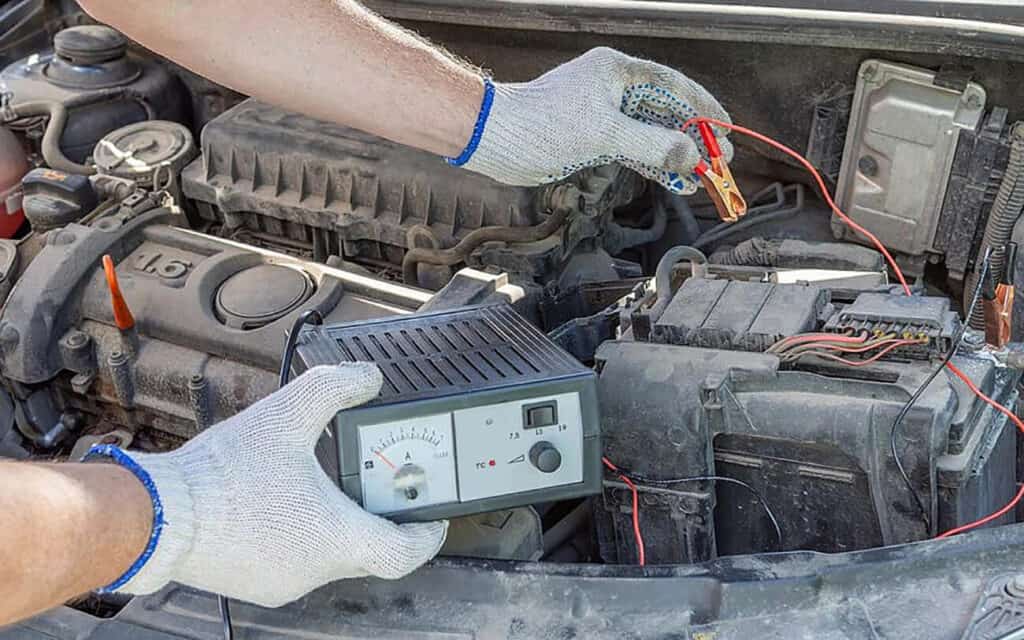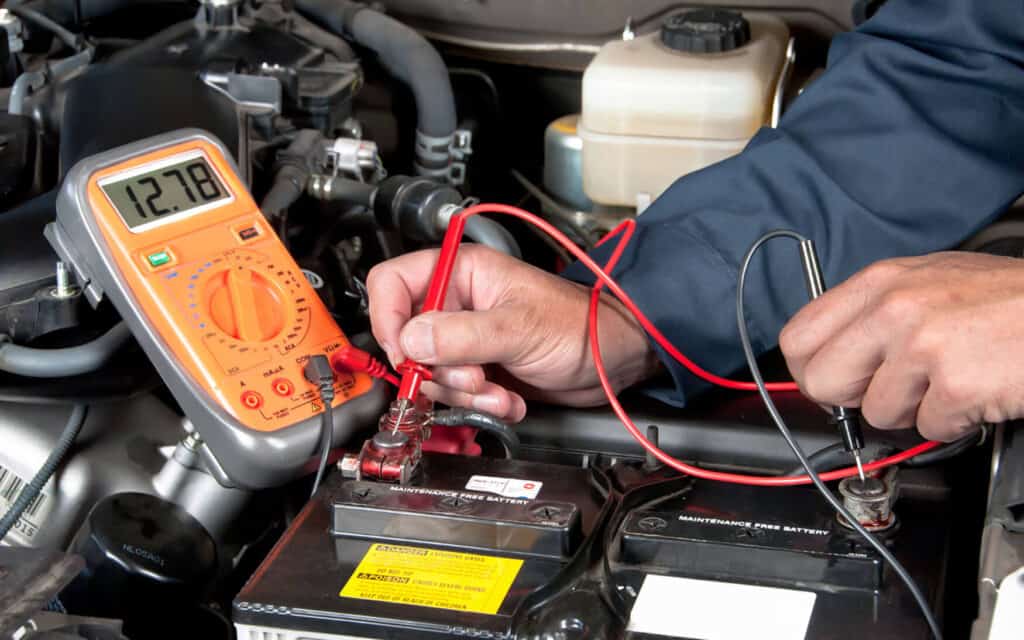Introduction: A Hidden Threat to Your Vehicle’s Power Source: Demystifying Parasitic Drain
Parasitic drain on a car battery is like that silent pest nibbling away at your vehicle’s energy source when you least expect it. This elusive problem can cause significant battery depletion over time, leaving you stranded and frustrated. But what exactly is it? Let’s unravel this mystery.
The Basics of Parasitic Drain: What Is It and What’s Considered Normal?
Parasitic drain refers to the continuous discharge of power from the battery even when the ignition is off. This power supports memory functions like your car’s clock or security system. While a normal parasitic drain on a car battery is usually between 25-50 milliamps, anything higher can be a concern. It’s like a tap left slightly open; the trickle may seem negligible but can lead to substantial loss over time.
Understanding what’s considered normal for parasitic drain is essential in maintaining your vehicle’s health. Just as a slow drip in your sink might not flood your house, a minimal drain on your battery is typically harmless. However, recognizing when that drain becomes abnormal is key. Regular checks and understanding the specific needs and behaviors of your vehicle’s electrical system can prevent unnecessary battery depletion. If you’re unsure or need assistance, booking an appointment with Uchaincs might be the perfect solution to keep your vehicle’s power source running smoothly and efficiently.

Symptoms and Common Causes: Recognizing Parasitic Drain in Your Vehicle
Symptoms That Raise an Alarm
• Difficulty Starting Your Car: If your car struggles to turn over, it could be a sign of parasitic drain.
• Repeated Need for Jump-Starts: If you find yourself constantly relying on jump-starts, it may be due to parasitic drain.
• Battery Depletes Quickly: An unexpected loss of battery charge might point to a parasitic issue.
• Unexplained Electrical Issues: Random electrical problems could signal an underlying parasitic drain.
Common Causes of Parasitic Drain
• Faulty Electrical Components: Damaged or malfunctioning parts can lead to continuous battery drain.
• Accessories Left On: Things like your dome light, radio, or GPS can drain the battery if left on.
• Wiring Issues: Improperly installed or damaged wiring can also lead to parasitic drain.
Diagnosis and Detection: Proper Procedures for Identifying Parasitic Drain
Tools and Preparation
• Utilizing a Multimeter: A multimeter set to measure current is essential for this diagnosis.
• Disconnecting the Battery: Ensure safety by disconnecting the battery before starting the procedure.
• Setting up Properly: Ensure the leads are attached carefully to avoid errors in reading.
Diagnosing the Problem
• Measuring the Drain: Any reading above 50 milliamps could signify an issue.
• Identifying the Culprit: Gradually removing fuses and observing changes in current can pinpoint the source of the drain.
• Consulting a Professional if Needed: If the process becomes complex, seeking professional help from a mobile mechanic company might be the best step forward.
Understanding the Analogy
• Playing Detective: This procedure resembles a detective’s work, carefully identifying the root cause of your battery’s depletion.
Preventive Measures: How to Stop Parasitic Drain from Draining Your Battery
Regular inspections of your vehicle’s electrical system, including alternators, fuses, and connections, can catch potential problems before they escalate. Think of it as routine dental check-ups; catching a cavity early prevents a root canal later. Ensuring that all accessories are turned off when the car is not in use can make a significant difference in conserving your battery’s life.
Addressing any known electrical issues promptly is another key to stopping parasitic drain. It’s like patching up a leaky roof; ignoring the problem won’t make it go away and could lead to greater damage in the long run. If you find something amiss, don’t hesitate to consult a reliable mobile mechanic company in Canada. Their expertise could be the timely intervention needed to ensure that the parasitic drain doesn’t become a persistent and costly problem.
Timing Matters: Understanding How Long It Takes for Parasitic Drain to Deplete Your Battery
How long does it take a parasitic draw to drain a battery? It’s a question with a multifaceted answer. Depending on the severity of the drain and the capacity of the battery, the timeframe can vary drastically. A mild drain, like one caused by a small light or a clock, might take weeks to significantly affect the battery’s charge. In these cases, the drain is like a slow leak in a tire, gradually letting the energy seep out without immediate catastrophic effects.
On the other hand, a more significant issue, such as a substantial electrical malfunction, could deplete the battery in just a few days or even hours. This type of drain is more like a burst pipe, rapidly draining your battery of its life. Understanding the nature of the drain and monitoring your battery’s behavior can be crucial in diagnosing and addressing the issue. Being aware of these timings can save you from unexpected breakdowns and help in seeking professional assistance in a timely manner.

Exploring the Technical Side: How Alternators and Fuses Can Cause Parasitic Drain
A faulty fuse, rather than cutting off the flow as it should, can sometimes create a continuous drain. It’s like a faulty switch that won’t turn off, continuously drawing energy. Similarly, a bad alternator can lead to an imbalance in the electrical system, wreaking havoc on your battery. These factors might not be the first things you think of when considering parasitic drain, but they can be underlying culprits.
The alternator’s role in charging your battery means that any malfunction could result in improper charging, draining, or even damage to the battery. It’s like having a bucket with a hole; you can keep filling it, but if the problem isn’t fixed, you’ll never achieve a full charge. Properly identifying these issues requires understanding not just the symptoms but also the underlying mechanics. Regular checks and maintenance, with a keen eye on alternators and fuses, can prevent these silent killers from draining your battery. If in doubt, turning to professionals can help ensure that your car’s power source stays healthy and robust.
Conclusion: Parasitic Drain Demystified: Keeping Your Battery Healthy and Your Car Running Smoothly
Parasitic drain is not a mythical beast; it’s a real and manageable issue. By understanding the symptoms, causes, and prevention measures, you can keep your battery healthy and your car running smoothly. For any complicated scenarios, don’t hesitate to consult a professional mechanic, like the experts at Uchaincs, ensuring your vehicle’s vitality. Book an appointment with Uchaincs to tackle your battery woes today.
